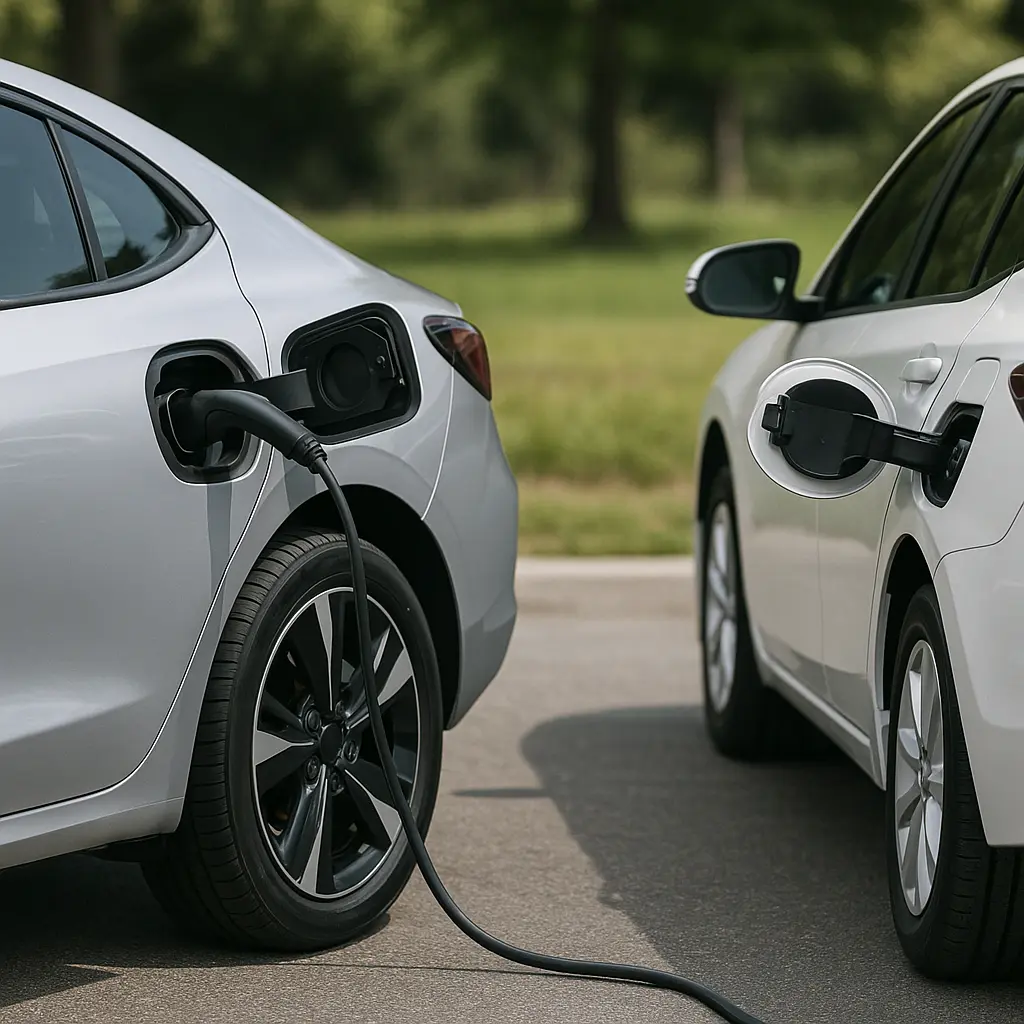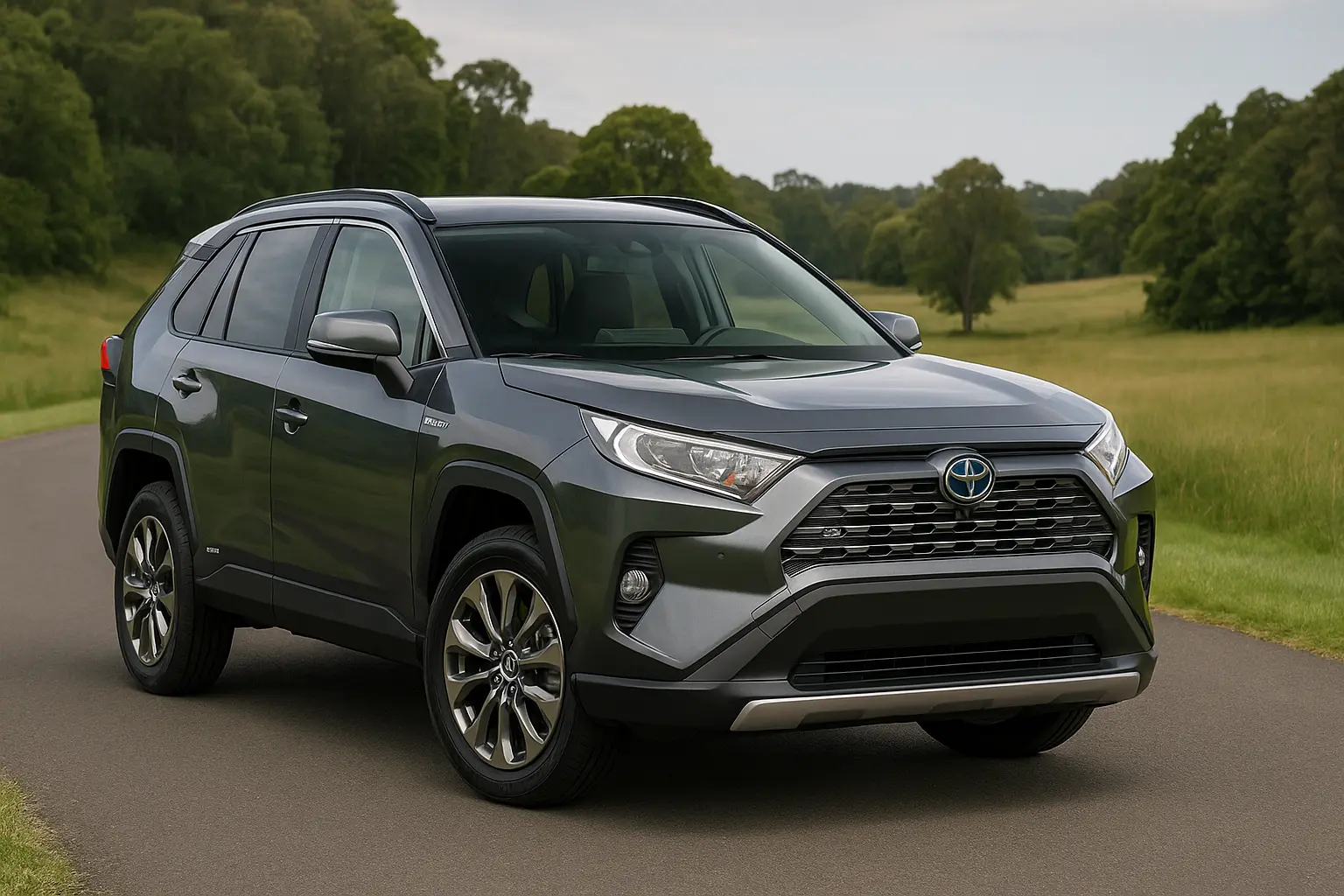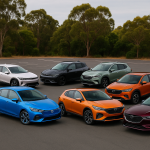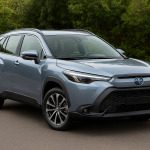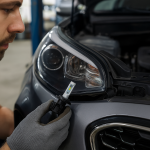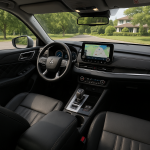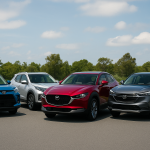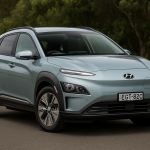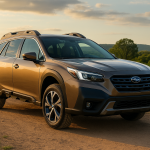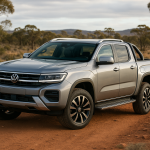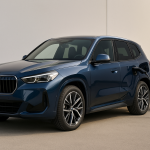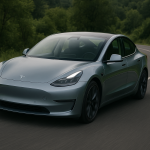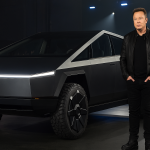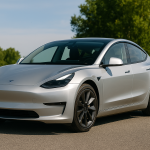Australian car buyers in 2025 are facing one of the most important choices in automotive history: Electric Vehicle (EV) or Hybrid Vehicle (HEV/PHEV)? With government incentives, rising fuel prices, rapid charging infrastructure growth, and manufacturers rolling out more eco-friendly models, the decision is no longer just about the brand or the badge—it’s about technology, cost of ownership, and your lifestyle.
While both EVs and hybrids promise greener driving, they are fundamentally different in how they operate, perform, and fit into everyday life. This guide will give you a comprehensive breakdown of electric vs hybrid cars in Australia, helping you decide which technology aligns best with your needs, budget, and driving patterns.
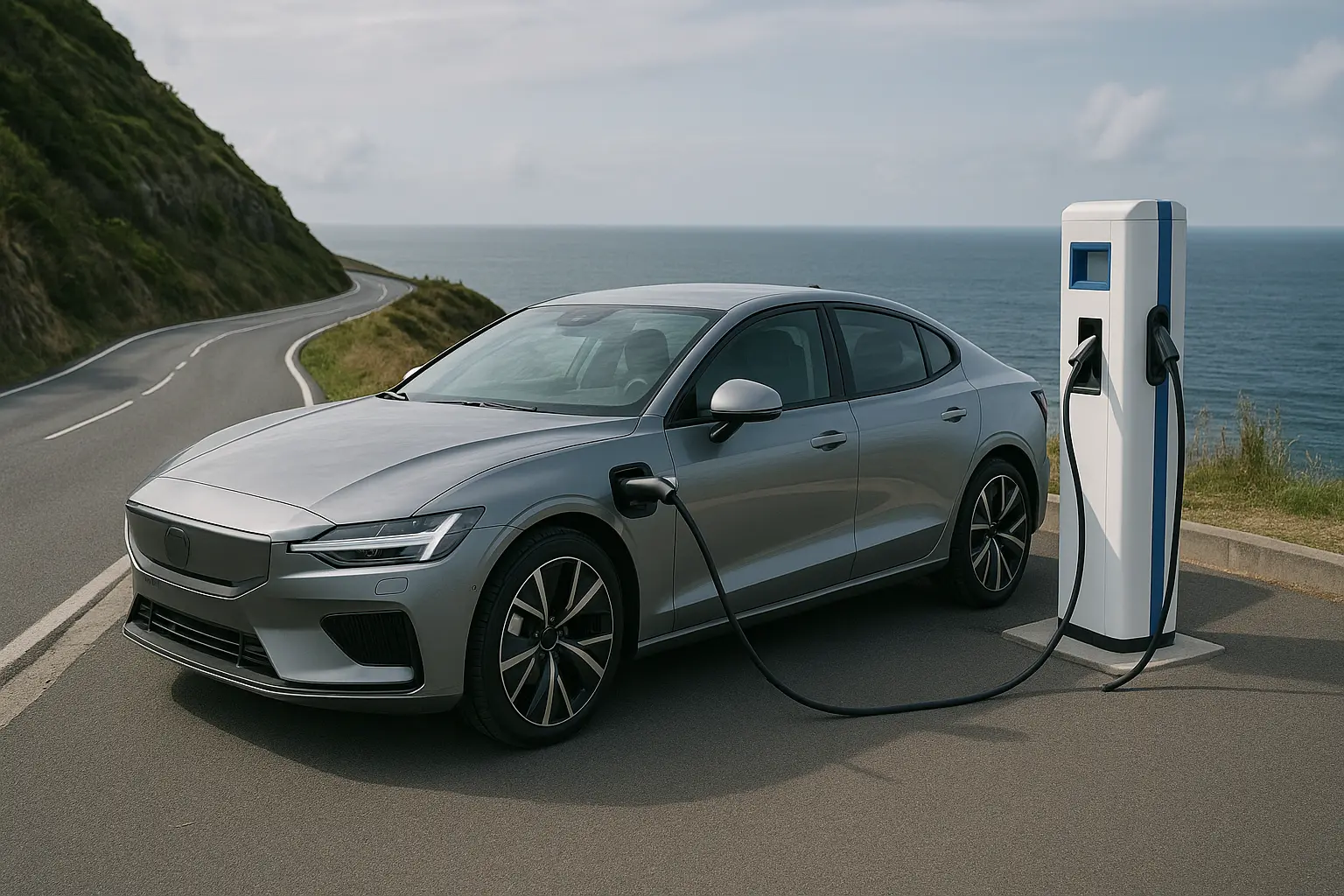
Understanding the Basics
What Is an Electric Vehicle (EV)?
An electric vehicle runs purely on a rechargeable battery pack that powers an electric motor. There’s no petrol engine involved, which means zero tailpipe emissions. Popular examples in Australia include the Tesla Model 3, BYD Seal, Hyundai Ioniq 6, and Polestar 2.
Key traits of EVs:
Powered only by electricity
Range depends on battery capacity (usually 300–600 km per charge)
Requires access to charging infrastructure (home charger or public fast charger)
Almost silent driving with instant torque
What Is a Hybrid Vehicle (HEV & PHEV)?
A hybrid car combines a petrol engine with one (or more) electric motors. There are two main types:
Hybrid Electric Vehicle (HEV): Uses regenerative braking and the petrol engine to recharge a small battery. Example: Toyota Corolla Hybrid.
Plug-in Hybrid Electric Vehicle (PHEV): Has a larger battery that can be charged externally, offering 40–100 km of pure electric range before the petrol engine kicks in. Example: Mitsubishi Outlander PHEV.
Key traits of hybrids:
Petrol + electric power blend
Better fuel economy than traditional petrol cars
Lower upfront costs than EVs
No “range anxiety” because the petrol engine takes over when needed
Cost Comparison: Upfront Price vs Long-Term Savings
Purchase Price
EVs: Generally more expensive upfront, though prices are falling as Chinese brands (BYD, MG) and mainstream carmakers launch affordable models. Entry-level EVs in Australia start around $45,000–$55,000, while premium options can exceed $100,000.
Hybrids: More affordable starting point. A Toyota Corolla Hybrid can be had for under $35,000. Plug-in hybrids (PHEVs) usually start from $50,000–$70,000.
Running Costs
EVs: Electricity is cheaper than petrol. Charging at home can cost as little as $7–$10 for 400–500 km of range, compared to $60–$100 at the bowser for petrol.
Hybrids: Lower fuel costs than petrol-only cars, but still ongoing reliance on fuel. PHEVs can be cheap if mostly driven on electric range, but costly if used like a regular petrol car.
Incentives & Rebates
Many Australian states offer EV rebates, reduced stamp duty, and registration discounts. Hybrids typically do not qualify for these incentives.
Performance and Driving Experience
Acceleration & Power Delivery
EVs: Instant torque, smooth acceleration, often outperforming petrol sports cars in straight-line speed. Example: Tesla Model Y can sprint 0–100 km/h in under 5 seconds.
Hybrids: Balanced but less thrilling. Power is shared between the petrol engine and electric motor, resulting in smooth but not explosive performance.
Range & Refuelling
EVs: Depend on charging availability. Long trips require planning around charging stops. Range anxiety remains an issue for some drivers, though 500+ km EVs are now common.
Hybrids: No charging worries. Petrol refuelling remains quick and convenient, making them better suited for regional or outback travel.
Maintenance and Ownership Costs
Servicing
EVs: Fewer moving parts (no oil changes, exhaust systems, or gearboxes). Maintenance is generally cheaper.
Hybrids: More complex due to dual systems (engine + motor). Regular servicing needed for both components.
Battery Longevity
EV batteries now come with warranties of 8 years / 160,000 km.
Hybrid batteries typically last the lifetime of the car but may cost thousands to replace if needed.
Environmental Impact
EVs: Zero tailpipe emissions, but carbon footprint depends on Australia’s electricity grid (currently about 65% fossil fuel).
Hybrids: Emit less CO₂ than petrol cars but still contribute to greenhouse gases. PHEVs are greener only if regularly charged.
Lifestyle Fit: Which Is Better for You?
City Commuters
Best Pick: EVs or HEVs
Why: Short trips, access to home/work charging, and stop-start traffic favour EV efficiency.
Long-Distance Drivers
Best Pick: Hybrids or PHEVs
Why: Quick refuelling, no range anxiety, and balanced running costs.
Rural & Outback Drivers
Best Pick: Hybrids
Why: Charging infrastructure in remote Australia is still limited. Hybrids offer fuel efficiency without charging dependence.
Eco-Conscious Buyers
Best Pick: EVs
Why: Zero emissions, lower lifetime CO₂ output, and alignment with sustainability goals.
The Australian Market in 2025
EV Adoption: Sales doubled in 2024, with more affordable models arriving in 2025 (MG4, BYD Dolphin, Kia EV5).
Hybrid Popularity: Toyota remains dominant with Corolla, Camry, RAV4 hybrids.
Government Support: States like NSW and VIC are investing in EV charging corridors, making long-distance EV travel more viable.
Key Pros and Cons
Electric Cars (EVs)
Pros:
Zero emissions
Cheaper to run
Instant performance
Low maintenance
Cons:
Higher upfront price
Dependent on charging access
Longer refuelling times compared to petrol
Hybrid Cars (HEVs/PHEVs)
Pros:
Affordable entry point
Flexible fuel + electric use
No range anxiety
Great resale value (especially Toyota hybrids)
Cons:
Still reliant on petrol
Higher servicing complexity
PHEVs can be inefficient if not charged regularly
Future Outlook
By 2030, EVs are expected to dominate new car sales in Australia, while hybrids may serve as a stepping stone for buyers hesitant about full electrification. Charging infrastructure growth, falling battery costs, and government policies will tilt the scale increasingly towards EVs.
Conclusion: Which Should You Buy?
Choose Electric if: You want cutting-edge performance, ultra-low running costs, and have easy access to charging at home or work. Perfect for city dwellers and eco-conscious Australians.
Choose Hybrid if: You value flexibility, travel long distances, or live in areas with limited charging infrastructure. Ideal for regional drivers and those wanting eco benefits without lifestyle changes.
Ultimately, the decision between electric vs hybrid cars in Australia comes down to your budget, driving habits, and access to charging. Both options offer greener, more efficient motoring compared to traditional petrol and diesel vehicles—but the future is clearly steering towards electric.
Leave a comment
Your email address will not be published. Required fields are marked *


